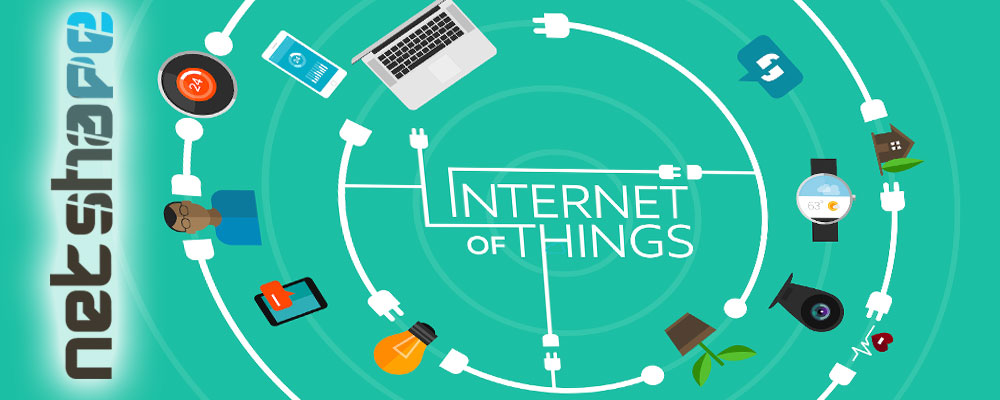BLOG
Latest Tech
News

July 21, 2022
The Internet of Things means first of all wireless quality and security
Lately, people are talking more and more about the Internet of Things. A simple definition would be that the Internet of Things is a concept that defines a world in which all things (cars, household appliances, lighting systems, mobile, portable devices, etc.) are connected between them through the Internet. This is already happening on a smaller scale.
The evolution is clear, more and more manufacturers of household appliances, gadgets and various devices involve the idea of artificial intelligence in the equation of the future, by which our products will be able to communicate between them and even make decisions instead of us. Better ones, of course. But this would be the ideal projection of the applicability of the Internet of Things concept. We will get there, of course, and we can see small but concrete steps.
The fundament on which this entire concept is developed is the Internet, with its fortunate attachment, which is the wireless connection. In a world where devices become increasingly refined, smart and sophisticated and it is pointless to even think about wired signal. It is so oldish
The involvement of radio propagation in the story of the Internet of Things must definitely bring our discussion to the realm of wireless security. Everyday we do our homework for the future, so here at Net Shape you can find one of the keys that can successfully cover any need for wireless security. We constantly involve resources in documentation and development of wireless projects, so we look at the future with confidence.
Even though everything seems to happen in micro-networks (a personal universe that we populate with devices, from which we will even expect intelligent interaction), the Internet as we know it is the fundament on which such small networks are built. And the Internet comes with the good and bad. Things we encounter everyday, even as innocent users. In a professional environment, challenges tend to get even greater, especially since we are talking about concurrent connections of many devices, each with its technical performance and limitations that need to be considered.
And since we are talking about the Internet of Things, we already imagine how in our home the refrigerator will order by itself, online, yogurt, milk and so on, after it has learned our consumer habits. The microwave oven will know when we approach home and what to do to receive us with a warm meal. Same with the coffee machine (it already does that today, with its programming system), the TV set, and, why not, even the heating. And so on, until we exhaust all the products that can be included in the idea of a Smart Home.
Not only that, but the machines will be continuously connected to the Internet. Demonstrations have been made about that, interesting up to a point, but scary for a possible future. If you haven’t seen it, it was proven that it is possible to take over the controls of a car, when the driver becomes a witness of their own uselessness. Such “kidnappings” by cybernetic attacks can lead to terrible things, even tragedies. Artificial intelligence can also lead to incredibly good things, too. An example: imagine someone has a heart attack while driving alone in their car. In this case, the Internet of Things can save many lives (those of other persons in traffic that could collide with an out of control car, but also that of the driver – the car will be able to call an emergency service, or even drive itself to the nearest place where first aid can be provided).
All this is perfectly possible and will happen sooner than you think, but can only exist under an effective security system.
We are playing with many devices, potential companions in an Internet of Things. The speed of developments and the need to sell more and cheaper involve a painful compromise at software level. The things look good and do what we are told they do. But the security they provide is somehow precarious, so the task to isolate them in a micro-system belongs to each of us. Any such device is a small Trojan horse can bring access gateways by which entities can take over. This is where we come in. Since we cannot intervene in the software for each particular case (it is not our job, and it wouldn’t be possible anyway), we choose the safest option: secure the entire system as best we can.
As we were saying, all such things will communicate between them, but also with us, through the Internet. Inside communication will be of course wireless, so this is where we can help. We have the capability to provide the most complex Wi-Fi infrastructure, focusing on wireless security. We have been doing this for year, with nothing but the best results. Beyond security, we are also interested, as it is normal, in the quality of the wireless network. We constantly work on optimizations, monitor any wireless network we work on and provide support to anyone who asks for it.
Additionally, we identify possible applications of wireless networks in the most diverse environments. We are a company that understands the future, but we understand we need to discuss it from now. So we challenge you to tell us what you think will become of the Internet of Things, , and also what your expectations are, where you think such a smart interconnection would be more helpful to you.
We love challenges!
In the future we will have more articles about the Internet of Things, and we even intend to come with concrete examples of products that can already be associated with this concept. If you have examples of such products, it would be helpful if you mentioned them in a comment. We’ll take them, test them, tell you our opinion, even help you get the most out of them.

